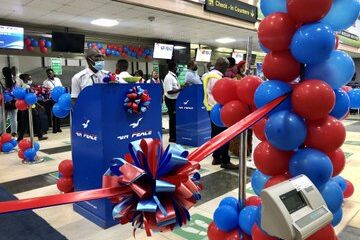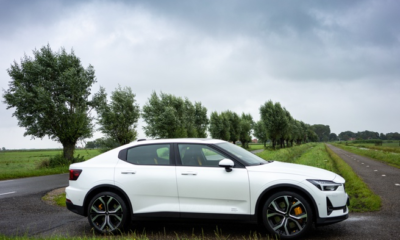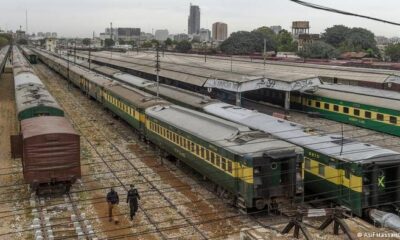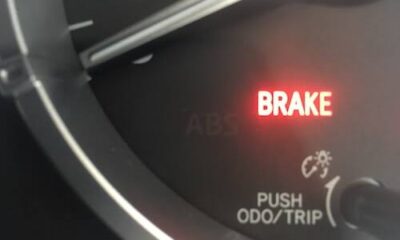MOTOR SPORTS
How Pit Stops work in Formula 1 racing
Formula One Pitstops are one of the best finely orchestrated pitstops in any motorsports. It is one of the most complex, fastest and most beautiful thing to watch during the race.
Pitstops in Formula one are usually around 2 seconds, so fast that even a small mistake can prove to be catastrophic.
Lets Start with the Setup: Formula 1 has the most complex pitstop crew of any motorsport. There are so many people servicing the car that you’d need to call 5 taxis just to get them all home.
There are 3 mechanics on each wheel (One carrier to Remove the old tyre, Another to stick the new tyre, and a third to loosen and tighten the wheel nut with a Pneumatic Gun)
One mechanic on either end of the car to lift and lower the car
2 mechanics standing on either side of the car, to keep it steady while its being serviced.
2 mechanics ready to make front wing adjustments
2 spotters to keep an eye on Pit Lane Traffic
1 mechanic with a fire extinguisher.
All in all 19 crew members service one car in just 2 seconds
In the above pic No. 10 is actually the Spotter for Pit Lane Traffic
Step 1 : The entire crew positions themselves expecting a car to arrive at an exact position (If the car overshoots even by a few centimeters, the whole crew has to readjust themselves, which costs valuable time), The cars are coming in at 80kmph, and have to be precise on where they stop. Hence, often there are mechanics on the front wheel wearing a bright marker on their arms for the driver to line up.
Step 2: Raising the car: Before the cars comes to a stop, mechanics on either end of the car are getting their jacks under the car to lift it up. The jacks aren’t allowed to have any powered components, hence the mechanic physically lift the car, by levering the jack over its wheel.
Image of a Front Jack
Since the tyre changes on each tyre aren’t likely to be operating in sync, hence the unbalanced forces are jostling the car at all times, hence the car is kept steady by two mechanics on either side of it.
Step 3: Changing the Wheel: While the Mechanics on the front and back are lifting the car up, the wheel mechanics had started unscrewing the wheel. The wheel mechanic looses the wheel nut as the car is being raised, a second mechanic, pulls the old tyre free and the third mechanic slots a new tyre on the axle. The Wheel gun mechanic moves back in to tighten the wheel.
The Wheel gun is pneumatic (i.e. It’s Powered by high pressure air in order to deliver quick and powerful pulses of torques, to tightly screw and unscrew the wheels. Also the wheel nut is just 3 threads deep for fast screwing and unscrewing.
Image of a wheel nut, Observe that it has only three threads. This sits in loosely between the rims of the tyre.
This is how the Tyre is attached onto the axle, Observe that there are two pins protruding out from the axle, this is for safety, in order to not let a loose wheel out.
Image of a Wheel gun.
Step 4: Dropping the car: As soon as the new wheels are physically pushed onto the axle, the jack operators start to drop the car. Both the jacks have quick release handles, that the mechanics will pull to drop the car. The front jack is a swivel jack, meaning it will allow the front jack operator to move out of the cars way before the jack is lowered.
Step 5: Releasing the car: This is a really tricky part, Nowadays, teams use the traffic light signal, to indicate the driver when it’s safe to leave. All driver has to do is to wait for the green light.
Every Team has a different approach on when and how to signal the green light.
Essentially it works like this, The wheel gun mechanics have a button on their guns that they can hit, when they are done tightening the wheel nut, Jack operators have a button that they can hit when they have lowered the jacks.
If all of these buttons are pressed, the car is safe to be released and the light goes green.
There are two spotters who are watching the pitlane, if there is a car coming in the pit lane, and releasing the car would cause a collision, then the spotters have an override button, that keeps the light red, there is usually another spotters who would make sure there is no loose bit of body work, fire, or a mechanic in the way.
The Light that is in front of the driver during the pitstop
Its quite evident with this pic what each person actually does during a pitstop. Observe those front wing adjusters making adjustments on the front wing.
-

 AVIATION5 years ago
AVIATION5 years agoPhoto News: Air Peace commence flight operations to South Africa
-

 Car News5 years ago
Car News5 years agoPolestar is recalls over 2000 electric cars due to software bug
-

 RAIL5 years ago
RAIL5 years ago36 Killed in Pakistan Train Accident
-

 Technology5 years ago
Technology5 years agoCommon mistakes in CO₂ emissions calculations
-

 Business5 years ago
Business5 years ago2016 Volvo XC60 review and specifications
-

 Reviews5 years ago
Reviews5 years ago2021 Audi A6 Specifications and Review
-

 Reviews3 years ago
Reviews3 years agoDebutant Kia’s new K8 sedan benchmarks luxury, safety
-

 SAFETY / CAR CARE5 years ago
SAFETY / CAR CARE5 years agoHandbrake warning light; what it means and what to do
